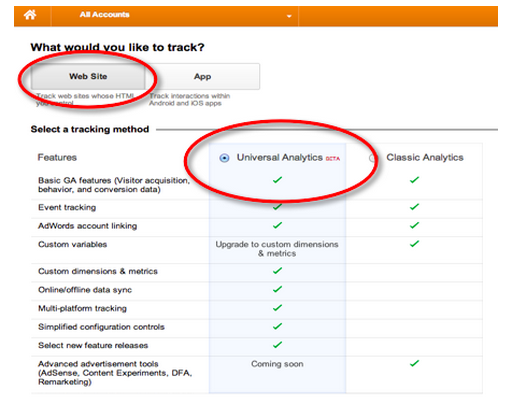Quick Guide to Universal Analytics for Ecommerce

Nowadays people use a variety of devices, browsers and platforms to surf the Web and interact with businesses, which can make it difficult for merchants to keep track of consumers' sales cycles. But a new set of features, which Google has dubbed Universal Analytics, aims to remedy this problem.
What is Universal Analytics?
The limited beta release of Universal Analytics was announced last October, and was recently opened to the public in March. The new set of features presents users with a better way to understand the multi-device usage patterns of today's consumers.
Essentially, Universal Analytics helps businesses recognize how customers interact with their digital properties across a variety of devices and touchpoints. The new set of features change the way data is collected and organized in Google Analytics accounts. In fact, Universal Analytics introduces the analytics.js code snippet as the primary collection method for websites, which is a flexible JavaScript that gives users more customization options for their data.
It is important to note that Universal Analytics exposes options in the admin interface that were previously only accessible through the development environment. This makes it easier for developers to customize configuration settings such as campaign timeout handling and search term exclusions. Developers can also create custom dimensions and metrics with Universal Analytics to collect data that Google Analytics doesn't automatically track.
That said, perhaps the most unique feature of Universal Analytics is the introduction to Measurement Protocol, which allows developers to make HTTP requests to send raw user interaction data directly to Google Analytics servers. This allows developers to measure how users interact with their business across a variety of touchpoints.
How to Get Started
Those who are new to Google Analytics can choose Universal Analytics when they set up their account, however, those who are already using Google Analytics need to create a new Web property in their account to start exploring the new features that Universal Analytics has to offer. Developers can implement Universal Analytics for websites, iOS and Android apps, as well as use the new Measurement Protocol for all other platforms.
In order to set up Universal Analytics, developers need to include the analytics.js JavaScript snippet on all the website pages they want tracked. That said, there are other Google Analytics features that require additional setup. For example, Google recommends using Goals, Events and Ecommerce tracking for merchants selling products and/or services. Setting these up not only adds value to the collected data, but also can help users improve their understanding of visitors and how they interact with a business.

Benefits for Merchants
Google's Universal Analytics is valuable to merchants because it can help them identify and track consumers through the buying cycle - both online and offline.
Not only does Universal Analytics tie together the interactions that consumers have with your brand over a variety of browsers and devices, but Measurement Protocol can also be used to integrate offline interactions that consumers have with your business as well, including data from call center systems, point of sale systems, loyalty programs and more.
For example, merchants can use Measurement Protocol to integrate offline purchase data into their Web analytics data. Merchants can identify consumers in the analytics with their loyalty card ID and then import important information, such as number of transactions over a period of time and purchase amount. In order to do this, merchants must first define their objectives and then map their offline actions into the Google Analytics fields.
By using these new tracking features available in Universal Analytics, merchants will be able to better monitor their customers shopping patterns and optimize their strategies for reaching customers. Moreover, it will help merchants have a more accurate view of their revenue and conversions across channels so they can monior the performance of their business in one location.








